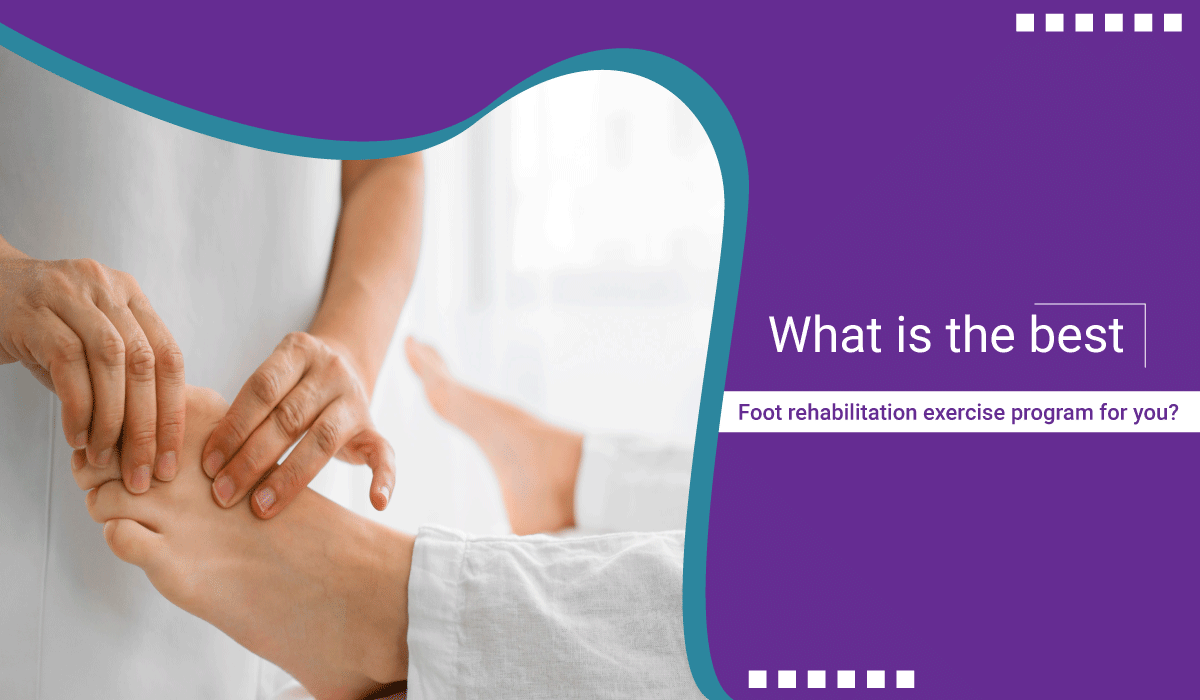What is the best foot rehabilitation exercise program for you?
The foot is often forgotten or at least ignored when it comes to developing strength, mobility, coordination, and much more. However, there are proper scientific research has done to show that many foot rehabilitation exercises, if implemented, reduce the risks of falls and also bring some major benefits for athletes like increasing their performance on jumping. These foot and ankle rehabilitation exercises also bring up your scores on agility tests. Moreover, this exercise program reduces the likelihood of running or jumping-related injuries. Your feet’ strength is as much important as the strength of trunk muscles and their strength is often called feet core.
Does a set of foot rehabilitation exercises help with an injury?
A foot-related injury is often caused due to strain but in many people, these causes of injury like strains are themselves a result of weak feet. This is because people don’t usually strengthen their feet which can act like a weak link in a strong chain. Nonetheless, when an injury is caused, you have been prescribed a set exercise program that helps you to recover and perform day-to-day activities as soon as possible. These foot and ankle rehabilitation exercises are an organized set of strengthening and mobility activities that make your foot muscle remember to move after an injury and provide inner support to not let those movements cause damage.
What are the core exercises of the ankle and foot rehabilitation program?
It is recommended to do these exercises barefooted to increase the efficacy of this program but if you find it uncomfortable, you can perform them and still get benefitted from doing them with your shoes on.
Feet tapping
For this feet exercise, you have to be in a sitting position on a chair with your knees bent, approximately 90 degrees, and feet flat on the ground. From here, you have to keep your heels on the ground while lifting the toes and then tapping them back on the ground. You have to go up and down with your toes doing this for a total of 30 repetitions
This exercise is initially only prescribed for one set but as you repeat the program over time, you can introduce another set and also increase your reps.

Forefoot ascend/ Calf raise
Also known as the heel raise, this exercise is recommended to be done standing but you can do it sitting if you don’t have the strength for it yet. In this exercise, you simply have to raise your heels targeting your calves. It is prescribed to it for one set of 30 reps which can be quite hard initially. With time into the program, you can include a second set with more reps.
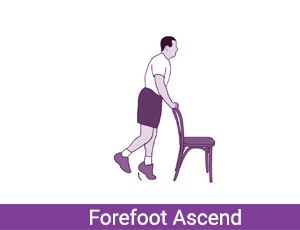
Inver evert asymmetric coordination exercise
This is one of the important foot and ankle rehabilitation exercises in which you have to set up sitting on a chair and then invert one foot while everting the other foot. It is important that you briefly hold each side to gain strength and then go back and forth between changing sides. You will be prescribed to start with one set of 10 reps.
During the course of the program, you will also have to do a standing version of this exercise as you become stronger and more comfortable
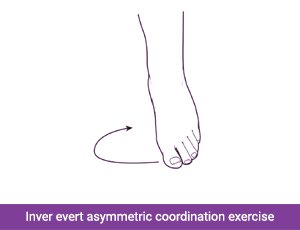
Forefoot abduction exercise
Set up in a sitting on chair position and then place a resistance or elastic band on your forefoot on one side while keeping your other for holding the other side of the band acting as an anchor to resist the motion. Let the former foot begin moving to the side against the anchoring foot. The important thing to remember is to keep your heel down while performing this motion. The prescribed reps in a set for this foot rehabilitation exercise are 10 reps and then you have to repeat for a second set. However, over time in the program, you are recommended to add in the additional set.
Dorsiflexors exercise
This exercise is set up similarly but instead of working on abductors, you will target the dorsiflexor. For that, you need to sit on a chair and anchor the band in front of you with some weight while keeping your forefoot inside the other end of the band. Focus on bringing your toes and foot up towards you. You have to go through as much range as you can while maintaining the band in position ensuring that you get a good top-end squeeze. Do this exercise for 10 reps on each side.
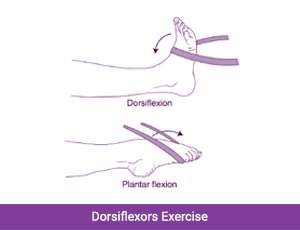
Ball squeeze drill
For this exercise, you will have your heel on the ground and then a ball set up under your toes. Your physiotherapist will ask you to try grabbing and holding the ball with your toes raising it up off the ground and putting it back under control. It is important to keep your heel on the ground while doing this. Switch between sets for each foot.
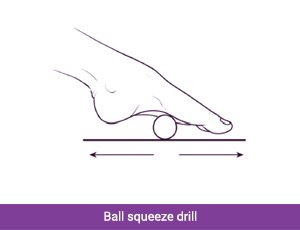
Conclusion
There is no doubt about the benefits of foot and ankle rehabilitation exercises. However, many people complain that the program of exercises they implemented did not match their goals. This is because many people just pick up a set of exercises from the internet and start performing them. While the information from your internet source can be reliable, it can only give you a set of general foot exercises that will not include customizations suitable for you. In order to get an effective foot rehabilitation exercise program suitable for your goals, you need to see a professional physiotherapist. You also want to keep your exercises open to variations which will depend upon your response to these exercises. For that, you again need a therapist to keep checking your progress. If you are in search of a physiotherapist for a prescribed set of foot and ankle rehabilitation exercises, contact Om Physio Plus Nutrition

